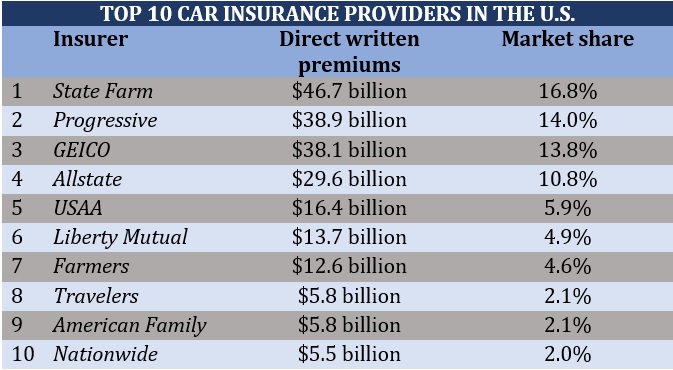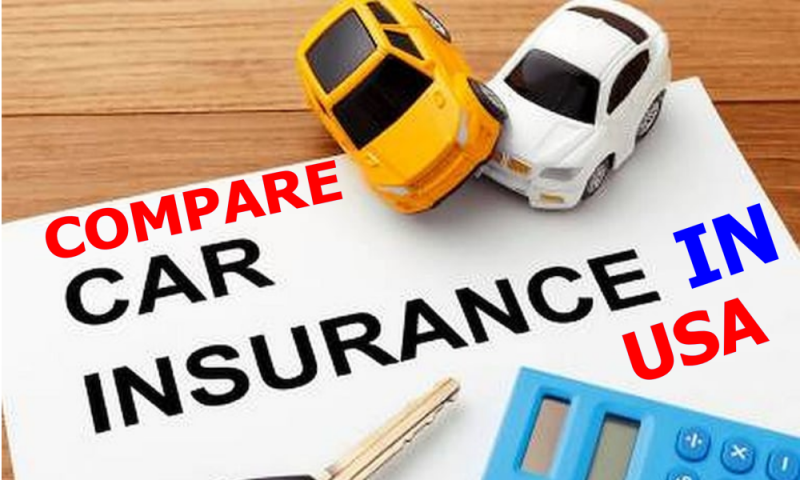A Comprehensive Comparison of Vehicle Insurance in the USA
Introduction: Click Here
Vehicle insurance is a crucial aspect of car ownership in the United States, providing financial protection against potential damages, accidents, and liabilities. With a vast array of insurance providers and coverage options available, consumers often face challenges in choosing the right policy for their needs. This comprehensive comparison aims to delve into the intricacies of vehicle insurance in the USA, exploring factors such as coverage types, cost considerations, regulatory frameworks, and emerging trends.
I. Types of Vehicle Insurance Coverage:
- Liability Insurance:
- Mandatory in almost all states.
- Covers bodily injury and property damage caused to others in an accident.
- Limits defined by state laws.
- Collision Coverage:
- Covers damage to the insured vehicle in the event of a collision.
- Commonly required for financed or leased vehicles.
- Comprehensive Coverage:
- Protects against non-collision events like theft, vandalism, and natural disasters.
- Often required for comprehensive financial protection.
- Personal Injury Protection (PIP) or Medical Payments Coverage:
- Covers medical expenses for the insured and passengers, regardless of fault.
- Mandatory in some states.
- Uninsured/Underinsured Motorist Coverage:
- Protects against accidents involving drivers with insufficient or no insurance.
- Highly recommended to safeguard against potential losses.
II. Cost Factors and Considerations:
- Premium Rates:
- Vary based on factors such as age, gender, driving history, and location.
- Comparison shopping is crucial for securing the best rates.
- Deductibles:
- The amount paid out of pocket before insurance coverage kicks in.
- Higher deductibles generally result in lower premium costs.
- Discounts:
- Available for safe driving records, bundling policies, and vehicle safety features.
- Incentives for loyalty and good credit.
- State-Specific Factors:
- Insurance regulations and requirements vary by state.
- States with higher rates of accidents or litigation may have higher premiums.
- Coverage Limits:
- Determined by individual preferences and financial capabilities.
- Adequate coverage essential for comprehensive protection.
III. Regulatory Framework:
- State-by-State Variations:
- Each state sets its own insurance regulations.
- Minimum coverage requirements vary, affecting policy costs.
- No-Fault vs. At-Fault States:
- No-fault states require PIP coverage and limit the ability to sue for damages.
- At-fault states allow parties to pursue claims against the at-fault driver.
- Mandatory vs. Optional Coverage:
- Liability insurance is typically mandatory.
- States may have varying requirements for additional coverage types.
- Insurance Verification Programs:
- Many states have systems to monitor and enforce insurance compliance.
- Penalties for driving without insurance can be severe.
IV. Emerging Trends and Innovations:
- Telematics and Usage-Based Insurance (UBI):
- Utilizes technology to monitor driving behavior.
- Can lead to personalized and potentially lower premiums for safe drivers.
- Autonomous Vehicles and Insurance:
- New challenges arise with the integration of self-driving cars.
- Liability shifts from drivers to manufacturers and software developers.
- Insurtech Disruptions:
- Technology-driven startups are changing the insurance landscape.
- Streamlined processes and enhanced customer experiences.
- Climate Change Impact:
- Increased frequency of natural disasters may affect insurance rates.
- Insurers adapting policies to account for climate-related risks.

Conclusion:
In conclusion, navigating the complex landscape of vehicle insurance in the USA requires a thorough understanding of coverage options, cost factors, regulatory nuances, and emerging trends. Consumers must carefully assess their needs, compare quotes from multiple providers, and stay informed about the evolving insurance industry to make informed decisions. With the right knowledge and diligence, individuals can secure comprehensive and affordable vehicle insurance to protect themselves and their assets on the road.










